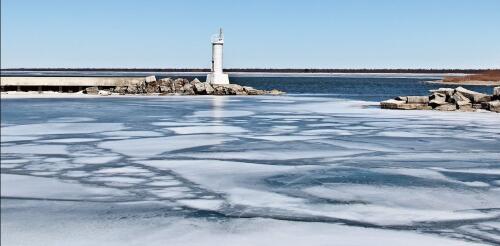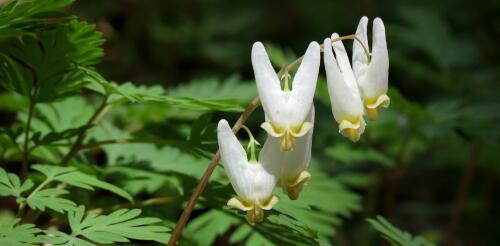Photosynthesis
Winters on the Great Lakes are harsh – so much so that the scientists who work there often focus on the summer months, when tiny microbes at the base of the food chain were thought to be most productive. However, emerging research is changing our understanding of these winter ecosystems and shining a light on a vibrant world of winter activity just below the ice. Scientists discovered in the early 2000s that communities of diatoms – tiny photosynthesizing algae – were thriving in the light under the wind-swept lake ice. But, it turns out, that was only part of the story. As the Great Lakes’ winter ice disappears – it hit record lows in the winter of 2023-24 – new analyses show that some diatoms appear to have a different way to create energy and survive in the dark, turbid ice-free water until summer. A thin slice of Lake Erie ice collected by a scientist has diatom algae growing on the bottom....
For short-lived spring wildflowers such as wood anemone (Anemone quinquefolia) and Dutchman’s breeches (Dicentra cucullaria), timing is everything. These fleeting plants, known as ephemerals, grow in temperate forests around the world, leafing out and flowering early in spring before the trees towering above them leaf out. Emerge too early, and it will still be winter; emerge too late, and it will be too shady under the forest canopy for essential photosynthesis to happen. Over their evolutionary history, these plants have figured out the best timing for their survival. But climate change is altering spring growing conditions, and plant life is changing along with it. There are many examples of plants shifting flowering time in response to warming temperatures, such as cherry blossoms opening earlier and earlier each year. However, when one part of an ecosystem shifts, will all the organisms that depend on it successfully shift too? Or will they be out of luck? And what...

